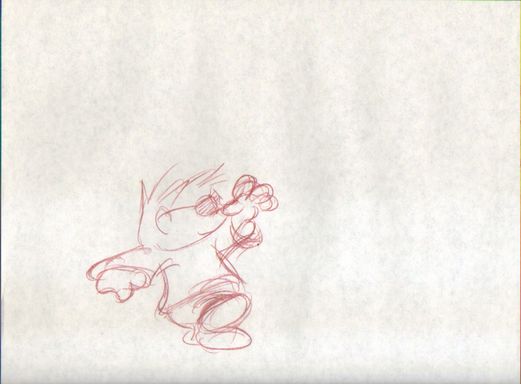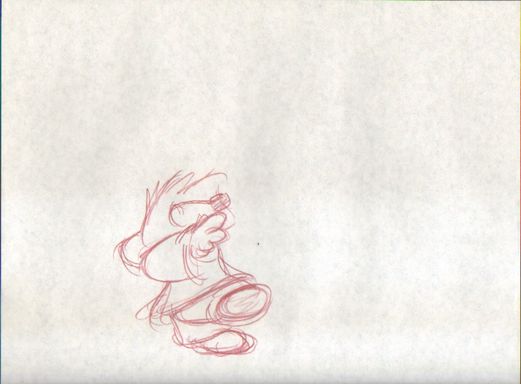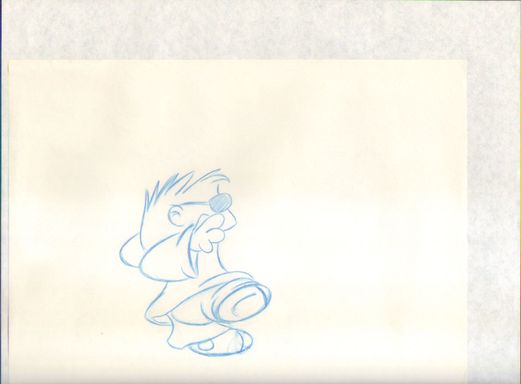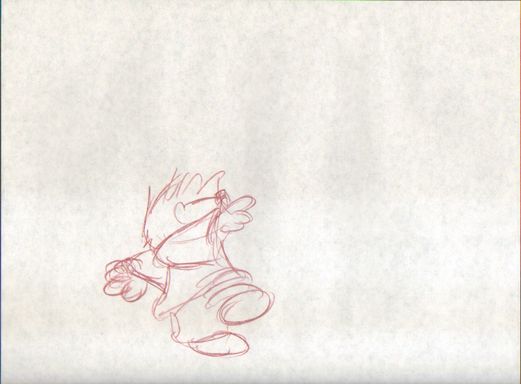Animation & Comic Strip Art c 2024 Rudy Agresta
Animation & Comic Strip Art c 2024 Rudy Agresta
AN EXAMPLE OF STRAIGHT AHEAD ANIMATION
This animation was done with pencil on paper. I knew what I wanted the character to do, so I basically started drawing in very ruff, loose form from the first drawing to the last. Once completed and checked, I added a few more drawings to smooth out the movement in spots. All drawings were then scanned into the computer and assembled and timed in ADOBE ANIMATE, this video rendered out from that program as an mp4.
This is a great way to animate and very freeing, not being tied down to prefigured timing and fancy camera particulars an animator would need to be aware of and accommodate for while animating.
The flickering effect is due to the fact that there were two different types of animation paper with differing weights in the same stack of paper. They had differing degrees of translucency.
RUFF VS CLEANED-UP DRAWING
Animating in a ruff, loose line is very freeing and allows one to get the drawing down quickly. This is very helpful when you realize you will need 12 - 24 drawings for every second of animation, so there is no time spent "noodling" over your drawings.
However, to get a "finished" look, there is the process of CLEAN-UP animation. The clean-up drawings are the ones that are used for inking and painting either directly on "cels" or digitally in a computer program. In a large studio production, the clean-up artists are a special breed of artists that follow up the animators. Clean-up artists are animators themselves, but they are usually those who are expert at details and can keep the character consistent in appearance and size from drawing to drawing.
Below is an example of a ruff and clean-up drawing (no 106) of the same pose. The clean-up IS NOT merely a tracing. If you trace over an image, it will look like a tracing. Clean-up involves keeping the spirit and spontaneity of the drawings alive to maintain that "illusion of life" that you see in great animation, as well as adding little details that enhance the animation. The cleaned up drawings are the ones that will be inked and painted by hand. The drawings that both precede and follow drawing 106 are added for visual continuity.
ANOTHER EXAMPLE OF STRAIGHT AHEAD ANIMATION
Here's another example of STRAIGHT AHEAD animation. Although timed for the acting portrayed, this one still needs additional drawings (inbetweens) to smooth it out in spots. Another example of what can be accomplished without worrying about drawing details. As I tell my students, "You're animating a feeling, an emotion..you're acting in every sense of the word. It's not about individual drawings." Clean-ups comes later. If you watch this frame-by-frame (use the < > keys on the main keyboard), there is one cleaned up pose that follows its ruff. It's toward the end of the film where the boy picks the dog up high before falling over his head.
© Copyright. All rights reserved.
We need your consent to load the translations
We use a third-party service to translate the website content that may collect data about your activity. Please review the details and accept the service to view the translations.



